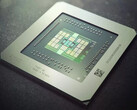Many gamers and viewers have observed that certain content can look washed-out, fuzzy and even blurry at times on the 4K monitors of which rather more defined images were expected. This effect often results from GPU-based efforts to interpolate images that were originally of lower resolution (full HD (FHD), for example) upward to match that of the new panel.
Common problems with this process arise when the chipsets in question try to push such data to 4K screens in accordance with bilinear (or bicubic) scaling. This can result in issues such as whites fading to greys, blurred objects and the inability to represent regular shapes with distinct borders properly. However, there is another prominent form of scaling that may provide a solution.
Integer-based scaling takes every individual pixel originally called for in 1080p content and ensures that it is replaced with full, squared numbers (2x2 at least, in other words) of 4K pixels in the same color. This avoids the ‘stress’ experienced by a GPU as it tries to multiply the same pixel by something more like 1.5. This is a possible consequence of bilinear scaling, which may lead to blurring or other inaccuracies on-screen.
Proponents of integer-based scaling believe in it to such an extent that an online petition has been set up to implement it rather than the bilinear technique at a software level. This campaign, directed at AMD and NVIDIA, has attracted over 2400 signatures to date. Recently, the latter has shown it’s listening by incorporating integer scaling (albeit as a beta) via its latest Windows driver update.
AMD, on the other hand, has yet to respond. However, this new move by its rival improves the chances that it will do so considerably. Thanks to our reader Matus Koprda for this story tip!
Source(s)
NVIDIA















